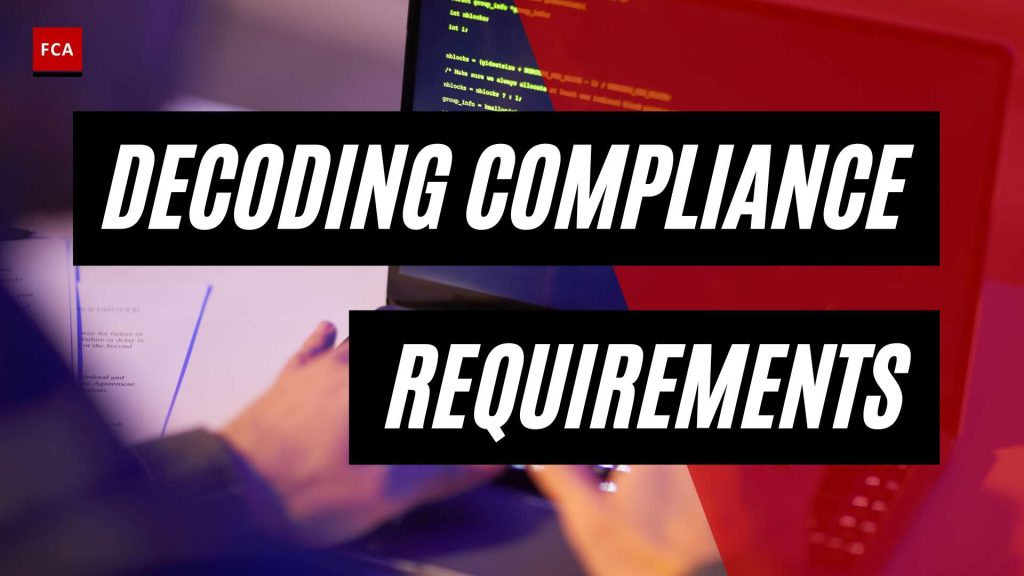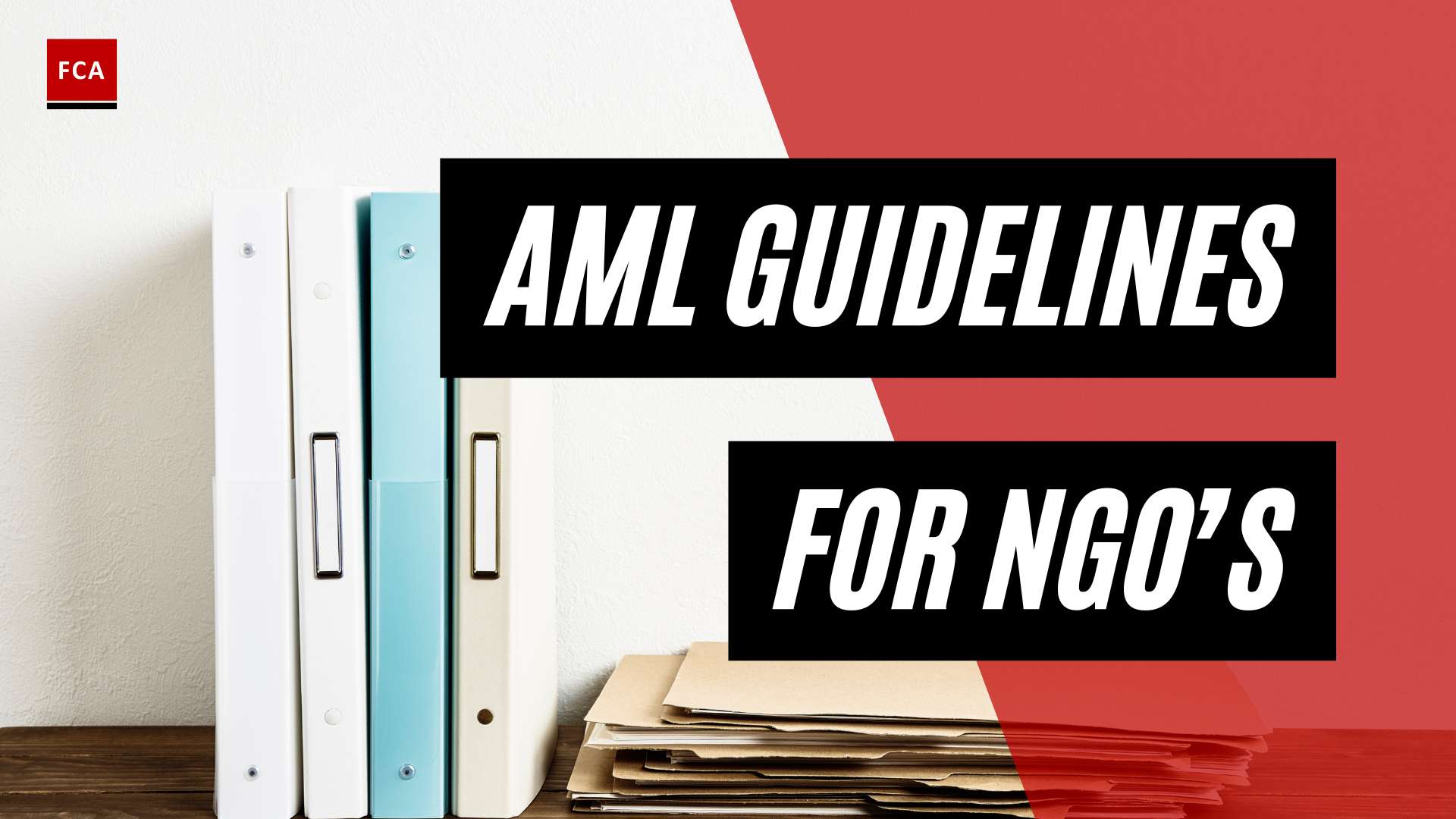Understanding AML Compliance
Navigating the world of Anti-Money Laundering (AML) can be complex, but understanding the basics can provide a solid foundation for building a robust AML compliance program.
Definition and Importance
AML compliance requirements refer to the regulations and laws that financial institutions and other regulated companies must adhere to in order to prevent money laundering and terrorism financing (Trulioo). These requirements often involve implementing Know Your Customer (KYC) procedures to verify the identities of customers and monitor transactions for any suspicious activities (Trulioo).
Compliance is not just about adhering to regulations – it also plays a crucial role in identifying opportunities or weaknesses in business processes. A well-implemented AML/CFT (Counter Financing of Terrorism) compliance program aids in guiding internal stakeholders on risks related to money laundering and terrorist financing, fostering a compliance culture that benefits the organization in the long term (Flagright).
Key Components of AML
A comprehensive AML compliance program comprises several key components. These include:
-
Detection of Suspicious Activities: Monitoring transactions and identifying any activities that may indicate money laundering.
-
Policies and Procedures: Establishing comprehensive policies and procedures covering AML compliance issues. These policies must provide clear guidelines on how people, processes, and systems work together to meet obligations and allocate resources to areas of higher threats.
-
Customer Risk Assessment: Implementing a KYC program to assess the risk levels of customers and their transactions.
-
Training: Providing ongoing and role-specific training for team members to recognize and report unusual activities, ensuring consistent policy application.
-
Independent Audits: Conducting audits by qualified third-party organizations to evaluate the effectiveness of the AML compliance program.
-
Risk-Based Approach: Understanding organizational risks and applying appropriate measures to mitigate them helps ensure compliance across products, services, and business lines (CPA Canada).
-
Reporting: Adhering to a specific reporting regime, including reporting suspicious transactions, large cash transactions, and more.
As regulations continue to evolve, companies must stay informed about changes and update their AML programs accordingly to remain compliant (Trulioo). By understanding the key components of AML compliance, professionals can ensure they are meeting the necessary aml compliance requirements and contribute to the fight against financial crime. For more detailed information on building an AML compliance program, refer to our AML compliance checklist.
Building an AML Compliance Program
Building a robust Anti-Money Laundering (AML) compliance program is a fundamental requirement for organizations to meet their regulatory obligations and effectively manage risks. The program should be comprehensive, well-structured, and tailored to the organization’s unique risk profile and operational scope. Key components of an effective AML program include developing policies and procedures, designating a compliance officer, and ensuring employee training.
Developing Policies and Procedures
A critical first step in building an AML program is establishing written policies and procedures that provide clear guidelines on how people, processes, and systems work together to meet obligations. These policies should be comprehensive, covering all aspects of AML compliance, from customer due diligence to transaction monitoring and reporting. They should also be risk-based, allocating resources to areas of higher threats (CPA Canada).
Policies and procedures should be regularly reviewed and updated to reflect changes in regulatory requirements, business operations, and risk landscape. For a more detailed guide, visit our AML compliance checklist.
Designating a Compliance Officer
Designating a compliance officer is another critical requirement of an AML program. The compliance officer should have expertise in AML regulations and be responsible for the design and implementation of the compliance program. They should also ensure awareness by the Board and senior management of the organization’s compliance status, and oversee staff training (Lowers Risk Group).
In larger businesses, the compliance officer should not be directly involved in the receipt, transfer, or payment of funds. Instead, they should have independent oversight and be able to communicate directly with decision-makers such as senior management or the board of directors. For more information, visit our AML compliance officer page.
Ensuring Employee Training
Training plays a pivotal role in an AML program. It ensures that all employees, from entry-level to management, understand their roles and responsibilities in preventing, detecting, and reporting suspicious activities. Training should start from onboarding and continue with ongoing, role-specific training. It is essential for team members to recognize and report unusual activities, ensuring consistent policy application (CPA Canada).
Training programs should be regularly updated to reflect changes in regulations, internal policies, and emerging trends in money laundering and terrorist financing. They should also be tailored to the specific needs and risks of the organization. For more information, visit our AML compliance training page.
Building a robust AML compliance program is a continuous process that requires commitment, resources, and ongoing monitoring. By investing in comprehensive policies and procedures, dedicated compliance officers, and effective training programs, organizations can ensure they meet their AML compliance requirements and protect their operations from financial crime risks.
Risk Assessment in AML Compliance
Risk assessment plays a pivotal role in Anti-Money Laundering (AML) compliance. It involves the identification and evaluation of risks inherent in a business and the implementation of effective controls to mitigate them. Understanding and managing these risks is a crucial part of meeting AML compliance requirements.
Identifying and Assessing Risks
Financial institutions are expected to carefully identify the risks inherent in their business, including products and services, customers, and geographic locations. This process forms a part of the risk assessment in developing an effective Bank Secrecy Act (BSA)/AML compliance program that fits its risk profile (Lowers Risk Group). Entities must consider factors such as the nature of their business, customers, products or services, delivery channels, and geographic locations when assessing and documenting risks.
According to the Proceeds of Crime (Money Laundering) and Terrorist Financing Act (PCMLTFA) regulations, all reporting entities (REs) must establish and implement a compliance program. This program should include elements such as reporting, record keeping, and client identification. These requirements came into effect on June 1, 2021.
Implementing Risk-Based Controls
Following the identification and assessment of risks, financial institutions are required to implement risk-based controls. A risk-based approach is essential according to the PCMLTFA regulations. Understanding organizational risks and applying appropriate measures to mitigate them helps ensure compliance across products, services, and business lines.
The controls put in place should be proportionate to the risks identified. Enhanced measures must be taken for high-risk clients and business areas. Implementing risk-based controls is a crucial aspect of an effective AML compliance program and forms a central part of an AML compliance checklist.
Risk assessment and the implementation of risk-based controls form the backbone of AML compliance. It is important for compliance professionals to have a deep understanding of these requirements and to stay updated on changes in the regulatory landscape. For more information on AML compliance, explore our resources on AML compliance regulations and AML compliance training.
Reporting and Record Keeping
An integral part of AML compliance involves vigilant monitoring and reporting of transactions, coupled with meticulous record keeping. These components are crucial in identifying, investigating, and preventing potential money laundering activities.
Monitoring for Suspicious Activity
In the context of AML compliance, businesses are required to continuously monitor financial transactions to identify any activities that may be considered suspicious or out of the ordinary. This involves closely examining transactions to detect patterns or behaviors that may indicate money laundering or other illicit financial activities.
Monitoring for suspicious activity is a critical part of the aml compliance program. It requires a combination of manual efforts and sophisticated aml compliance software to effectively keep track of numerous transactions and detect anomalies.
For accurate detection, the transaction monitoring process should ideally be tailored to the specific risk profile of each customer. This involves understanding each customer’s usual financial behaviors and identifying transactions that deviate significantly from their norm.
Reporting Obligations
If a business identifies a transaction as suspicious during its monitoring process, it is legally obliged to promptly report this to the relevant authorities. This process, known as filing a Suspicious Activity Report (SAR), plays a crucial role in assisting law enforcement agencies in their investigation and prosecution of money laundering and other financial crimes.
In addition to reporting suspicious transactions, businesses are also required to file reports for transactions exceeding a certain threshold amount or involving certain types of financial activities. The specific reporting requirements may vary depending on the jurisdiction and the nature of the business.
Beyond reporting, businesses must also maintain comprehensive records of their transactions and their AML compliance efforts. These records should include details of customer identification documents, account files, business correspondence, and results of any analysis performed during the transaction monitoring process. Businesses should be prepared to provide these records to regulators upon request as proof of their compliance with AML regulations.
Failure to adhere to these reporting and record-keeping obligations can lead to severe consequences, including monetary penalties and reputational damage for businesses (Financial Crime Academy). Therefore, it’s crucial for businesses to understand their AML compliance requirements and ensure they have effective systems, controls, and procedures in place. Be sure to refer to our aml compliance checklist to ensure you’re covering all bases.
For more insights on AML compliance, you can explore our resources on aml compliance officer duties, aml compliance training, and aml compliance controls.
AML Compliance Across the Globe
Understanding the diversity in anti-money laundering (AML) regulations across different regions is crucial for any compliance professional. The Financial Action Task Force (FATF) has developed 92 internationally endorsed global standards known as the FATF’s Recommendations, providing a framework for effective AML systems worldwide. Despite these common minimum programmes, the implementation of AML compliance requirements varies significantly from country to country. Let’s explore some of these in detail.
AML Regulations in the US
In the United States, AML compliance is governed by a comprehensive framework designed to monitor and combat money laundering, terrorist financing, financial fraud, and sanctions. This is coordinated by agencies like the Financial Crimes Enforcement Network (FinCEN), the Office of the Comptroller of the Currency (OCC), and the Office of Foreign Assets Control (OFAC).
The Bank Secrecy Act (BSA) of 1970 is a cornerstone in this framework, which helps in detecting and preventing money laundering. Furthermore, the OCC guides financial institutions in risk management, forming an integral part of any AML compliance program.
AML Regulations in the EU
The European Union issues Anti-Money Laundering Directives (AMLD) periodically to harmonize AML and counter-financing of terrorism (CFT) regulation across the bloc. The Fifth Anti-Money Laundering Directive (5AMLD) was implemented on January 10, 2020, and the Sixth Anti-Money Laundering Directive (6AMLD) was implemented on June 3, 2021. These directives have set a unified standard for AML compliance requirements across the EU member states.
AML Regulations in Other Regions
In the United Kingdom, primary AML and CFT regulations include the Money Laundering, Terrorist Financing and Transfer of Funds Act 2017, the Proceeds Of Crime Act 2002, and the Terrorism Act 2000. Financial institutions in the UK must conduct risk-based checks on customers, perform customer due diligence (CDD), establish ultimate beneficial ownership (UBO), screen against PEP lists and sanctions lists, and conduct adverse media checks.
Switzerland regulates money laundering and terrorist financing through the Federal Act on Combating Money Laundering and Terrorist Financing in the Financial Sector 1997, known as the Anti-Money Laundering Act (AMLA). This Act imposes reporting and record-keeping regulations on financial institutions, along with screening requirements for sanctions, PEPs, and adverse media.
In conclusion, while there are commonalities in the principles and goals of AML regulations worldwide, the specific requirements can differ based on regional laws and guidelines. As a professional working in compliance, it is crucial to keep abreast of these changes and adapt your AML compliance framework accordingly.
Consequences of Non-Compliance
Failing to meet AML compliance requirements can lead to severe consequences for both individuals and organizations. These include regulatory penalties, reputational damage, financial losses, and in some cases, criminal charges.
Regulatory Penalties
Regulatory authorities worldwide enforce stringent penalties on entities that fail to comply with AML regulations. These can range from hefty fines to administrative actions that can severely impact an organization’s operations. For example, the Financial Transactions and Reports Analysis Centre of Canada (FINTRAC) has been authorized since December 30, 2008, to issue administrative monetary penalties (AMPs) to reporting entities that are not compliant with the Proceeds of Crime (Money Laundering) and Terrorist Financing Act.
Further, non-compliance with Parts 1 and 1.1 of the same Act may lead to criminal charges for non-compliance offenses. It’s crucial to note that AMPs and criminal charges cannot be issued simultaneously for the same instances of non-compliance (FINTRAC).
These penalties highlight the importance of developing and implementing an effective AML compliance program, complete with robust AML compliance controls and comprehensive employee AML compliance training.
Reputational and Financial Damages
Apart from the legal and regulatory repercussions, failure to comply with AML regulations can lead to severe reputational and financial damage. According to Financial Crime Academy, regulators across the globe increasingly impose hefty fines on institutions found in violation of AML laws and regulations.
Reputational damage can lead to a loss of customer trust, business partnerships, and market share. In some cases, it may result in the dissolution of businesses involved in money laundering activities.
The potential ramifications of non-compliance make it imperative for organizations to regularly review and update their AML policies, ensure their AML compliance officer is well-equipped to manage compliance requirements, and use advanced AML compliance software to stay ahead of potential risks.
Fulfilling AML compliance requirements is not just a legal obligation but an investment in the longevity and reputation of an organization. It’s crucial to understand these consequences and strive to adhere to the guidelines outlined in your AML compliance checklist.
Future of AML Compliance
The dynamic nature of financial crime necessitates continual adaptation in the realm of Anti-Money Laundering (AML) compliance. As the regulatory landscape continuously evolves, so too do the challenges faced by AML professionals. Let’s delve into the changing dynamics of AML and what they mean for the future of compliance.
Evolving Regulatory Landscape
AML compliance requirements are constantly evolving, necessitating companies to stay informed about changes in regulations and update their AML programs accordingly to remain compliant. Regulatory authorities have heightened their focus on AML compliance enforcement, leading to increased scrutiny and the implementation of more stringent regulations to combat money laundering and terrorist financing activities globally (Financial Crime Academy).
On an international front, the global organisation Financial Action Task Force (FATF) has developed common minimum programs for AML compliance, working with national regulators to combat money laundering and terrorist financing. The FATF has released 92 internationally endorsed global standards known as the FATF’s Recommendations that provide a framework for effective AML systems worldwide.
Regionally, the European Union issues Anti-Money Laundering Directives (AMLD) periodically to harmonize AML/CFT regulation across the bloc. The most recent, the Sixth Anti-Money Laundering Directive (6AMLD), was implemented on June 3, 2021.
In the US, the Anti-Money Laundering Act 2020 (AMLA) was passed in 2021, marking the most significant amendment to the Bank Secrecy Act (BSA) since the Patriot Act. AMLA introduced various AML/CFT measures to enhance the US’ framework for combating money laundering and terrorism financing.
Emerging Trends and Challenges
As the regulatory landscape evolves, so do the challenges faced by AML professionals. The rise of digital currencies, the increasing sophistication of financial criminals, and the growing complexity of financial systems all contribute to a more challenging environment for AML compliance.
Emerging technologies, such as artificial intelligence, machine learning, and blockchain, offer new solutions but also new complexities. While they have the potential to enhance AML compliance efforts, they also necessitate a greater understanding of technology and risk.
The increasing interconnectedness of global financial systems also presents its own challenges, with increased cross-border transactions leading to greater risks of money laundering and terrorist financing. As such, AML professionals will need to stay abreast of global developments and ensure that their AML compliance frameworks are robust enough to handle these evolving challenges.
In conclusion, the future of AML compliance will be marked by a rapidly evolving regulatory landscape and increasing complexity due to technological advancements and global financial integration. AML professionals will need to stay informed about changes in regulations, leverage emerging technologies, and continuously enhance their AML programs to stay ahead of the curve.








